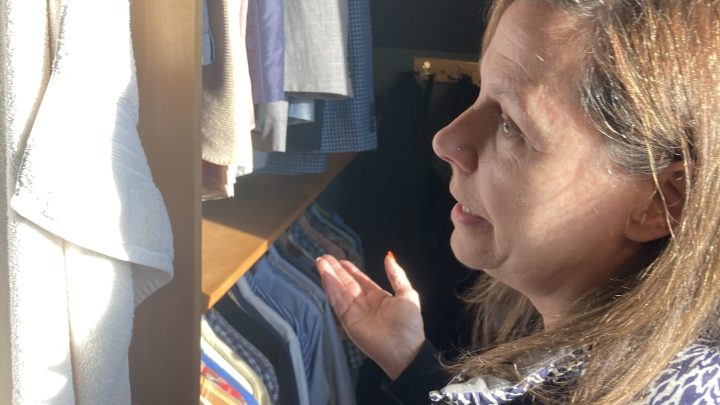
For home stagers, it’s hard to put a pretty face on the real estate downturn
For home stagers, it’s hard to put a pretty face on the real estate downturn

Krisann Evoli walked through a house being prepped for sale in a sought-after Minneapolis neighborhood, talking to the real estate agent and the owners about what she was seeing. She took notes on everything — from the tone of the light bulbs in the family room to the red paint in the upstairs hallway.
As the housing market slows down, people in every part of the real estate business — even those who are especially needed in this market — are feeling it. That includes Evoli, a stager. Her job is to give houses a makeover before they go on the market.
Before the For Sale sign goes up, the agent figures out what kind of person or family might be interested in buying it. It could be a young couple with little kids, say, or empty nesters getting ready to downsize.
That’s where the staging company comes in. Evoli — whose company, StageCraft Home Staging, works in the Twin Cities — tries to identify what would make the space as appealing as possible to as many buyers as possible. Then she brings in pieces that will set the stage.
Her strategy could be big and involved, like the time she went all out on a kid’s bedroom with a giraffe theme. She brought in pictures to hang on the walls and a 6-foot-tall stuffed animal.
It can also include small accents that help create the right ambiance, she said. “So we always bring brand-new, white, fluffy towels. We’ll usually bring a live orchid. We’ll bring, depending on the size of the house, maybe some apothecary jars with bath salts in them.”
Staging is thought to bring in more prospective buyers, which turns into more — and higher — offers. The practice has been part of the real estate business for years.
Jen Kyllonen, the real estate agent in Minneapolis who’s representing the sellers of this duplex, said that almost all buyers start their search online. So it’s a little like online dating.
“You make a decision so quickly on yes or no on a house or on a potential date,” she said. “Know what I mean? You’re like, ‘Nope, nope, nope.’”
A slower housing market should make stagers like Evoli even more sought after because their magic helps ensure that potential buyers take a good look rather than just swiping past. But the sluggish market is also making business tougher, Evoli said.
For starters, there just aren’t as many houses for sale. “We have fewer projects,” she said, “so that’s less topline revenue coming in.”
They’re taking longer to sell too. These days, a house might sit on the market for a month or more. And it has to stay dolled up that whole time, which means Evoli can’t use those couches — or orchids or stuffed animals — in other houses.
“So I cannot reuse that inventory as quickly,” she said. “Even though I have, say, the same amount of inventory, I have less access to it because it’s not going to be free in 30 days.”

Staging isn’t cheap. Real estate agents and stagers say it usually costs about 1% of the list price to get the house ready. So for a $300,000 house, that means spending $3,000 to fix it up.
Jennie Norris, chair of the International Association of Home Staging Professionals, said she’s been warning members: “Pricing may be more of a factor,” she said, “because they have to deal with sellers who are more strapped or they only have a limited budget. They’re concerned about how long they’re going to pay.”
Ideally, you keep staging up until the house passes its major milestones — financing, appraisal and inspection — in case the sale falls through.
Since stagers usually charge rent for furniture and other items they bring in, costs can add up quickly when houses sit on the market — and that can cut into the seller’s take.
Evoli said she’s looking for ways to cut costs. Over the last six months or so, she’s sold off about a third of her inventory and given up several of her storage units.
There’s a lot happening in the world. Through it all, Marketplace is here for you.
You rely on Marketplace to break down the world’s events and tell you how it affects you in a fact-based, approachable way. We rely on your financial support to keep making that possible.
Your donation today powers the independent journalism that you rely on. For just $5/month, you can help sustain Marketplace so we can keep reporting on the things that matter to you.











